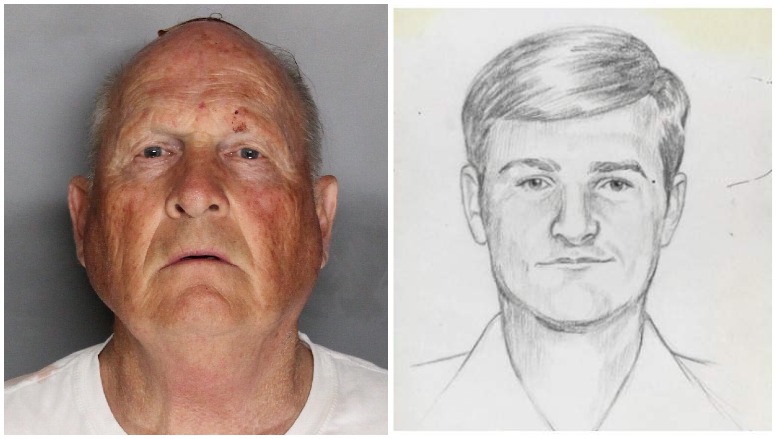
Mugshot Bryan Kohberger.
A process called genealogical DNA testing that experts say has revolutionized criminal investigations, but it did not help investigators develop Bryan Kohberger as a suspect in the Idaho murders case, according to an affidavit in the case.
Kohberger was arrested in Pennsylvania, Monroe County court records show. Previously, sources told CNN that genealogical DNA helped investigators pinpoint Kohberger as a suspect.
A detailed affidavit was released in the case on January 5, 2022. In it, authorities accuse Kohberger of stalking the students’ home multiple times before the murders. It says authorities believe a surviving roommate saw the killer, and it details how authorities say Kohberger was caught by a web of video and cell phone evidence as well as DNA from his father that was compared to DNA left on a knife sheath at the crime scene.
The affidavit says that DNA from Kohberger’s father was obtained from the family’s trash in Pennsylvania, and it was compared to the DNA left on a button on a knife sheath found in the bedroom where two victims lay murdered.
Kohberger’s lawyer told CNN Kohberger expected to be “exonerated” of the quadruple knife attack.
“Mr. Kohberger is eager to be exonerated of these charges and looks forward to resolving these matters as promptly as possible,” Kohberger’s lawyer, Jason LaBar, told CNN.
The four University of Idaho college students were knifed to death in the early morning hours of November 13, 2022, in their off-campus rental house in Moscow, Idaho, Moscow police have said in previous press statements, which named the victims as Xana Kernodle, Ethan Chapin, Kaylee Goncalves, and Madison Mogen. Police have not released a motive or if they know a possible motive.
“Investigative genetic genealogy has rapidly emerged as a highly effective tool for using DNA to determine the identity of unknown individuals (unidentified remains or perpetrators), generating identifications in dozens of law enforcement cases, both cold and active,” a 2019 journal article in Forensic Science International explains. It is called “Genetic genealogy for cold case and active investigations.” The article contains a chart detailing criminal cases throughout the United States that were solved with the technique.
According to Parabon Nanolabs, Genetic Genealogy “is the combination of genetic analysis with traditional historical and genealogical research to study family history. For forensic investigations, it can be used to identify remains by tying the DNA to a family with a missing person or to point to the likely identity of a perpetrator.”
To put this into layman’s terms, investigators put crime scene DNA into public DNA databases, and then they look for a match to even distant family members. That gives them the family tree. They then work through it, identifying possible suspects who fit the right age and location. Then, they obtain DNA from those suspects and match it to the crime scene. However, again, this is not the process used in the Kohberger case, according to the affidavit, which says they used a simpler approach: a trash pick to compare Michael Kohberger’s DNA to the sheath.
Authorities had identified Kohberger as a suspect by tracing a white Hyundai Elantra to him after spotting the vehicle on surveillance footage the morning of the murders, the affidavit says.
However, in many other cases throughout the world, suspects were identified through the genealogical DNA process. William Talbott II, a SeaTac trucker, was convicted of a 1987 double murder in the first jury conviction in the world using the technique, according to HeraldNet, adding that an appeals court overturned his conviction on a juror bias question.
Parabon used genealogical DNA testing to solve the murder case of Michella Welch, 12, who disappeared in 1986 from a park in Tacoma, Washington, according to a case summary on its website. After developing Gary Hartman as a suspect due to genealogical research, authorities matched his DNA to the crime scene by picking up a discarded napkin, the site says. According to Komo News, Hartman was convicted.
The technique has generated controversy. In 2019, a research article studying the process globally found that “social science debates about the use of familial searching in the field of criminal investigation have critically addressed the far-reaching implications of familial searching for genetic privacy, the reproduction of social inequalities, and dominant notions about the intersections between family and crime.” The article is called “Ethical Controversies of Familial Searching: The Views of Stakeholders in the United Kingdom and in Poland.”
According to that article, “the threats to genetic privacy relate to the potential of familial searching to conflict with the right to (not) know about the (in)existence of biological ties.”
When addressing the “reproduction of social inequalities, some authors have argued that the use of familial searching in criminal DNA databases tends to further aggravate the criminalization of the social groups most affected by the action of the criminal justice system,” the article found.
Here’s what you need to know:
In the Idaho Murders Case, DNA Was Recovered From Kohberger’s Dad Despite a CNN Report on Genealogical DNA

Washington State UniversityBryan Kohberger
CNN reported, through a source, that investigators “honed in on Kohberger as the suspect through DNA evidence and by confirming his ownership of a white Hyundai Elantra seen near the crime scene.”
Police had widely publicized their search for such a vehicle in their press statements.
According to CNN, “genetic genealogy techniques were used to connect Kohberger to unidentified DNA evidence,” before the DNA “was run through a public database to find potential family member matches.” Further investigation then “led to him as the suspect,” the source told CNN. However, the affidavit disputes this account, saying Kohberger’s father’s trash was used.
In 2018, after genealogical DNA techniques through an open-source database called GEDMatch were used to find the Golden State Killer, a study found that genealogical DNA investigations could be used to identify “about 60% of white Americans,” according to Science.org.
“If you’re white, live in the United States, and a distant relative has uploaded their DNA to a public ancestry database, there’s a good chance an internet sleuth can identify you from a DNA sample you left somewhere,” Science.org reported.
A Columbia University study found that by “combining an anonymous DNA sample with some basic information such as someone’s rough age, researchers could narrow that person’s identity to fewer than 20 people by starting with a DNA database of 1.3 million individuals,” Science.org reported.
In a 2014 study that Columbia’s Yaniv Erlich co-authored with Arvid Narayanan, he raised concern about privacy. “Genetic genealogy attracts millions of individuals interested in their ancestry or in discovering distant relatives. To that end, the community has developed impressive online platforms to search for genetic matches, which can be exploited by identity tracers,” the study, published in Nature Reviews Genetics, found.
“In a few years, it’s really going to be everyone,” Erlich told The-Scientist.
The Golden State Killer Was Among the High-Profile Crimes Solved Using Genealogical DNA

Sacramento Sheriff\’s OfficeJoseph James DeAngelo pictured in a mugshot after his arrest, next to a FBI sketch of the East Area Rapist and Golden State Killer.
The Parabon website explains that the process uses DNA from “volunteer participants,” who have willingly placed their samples into open-source databases. The site says:
By comparing a DNA sample to a database of DNA from volunteer participants, it is possible to determine whether there are any relatives of the DNA sample in the database and how closely related they are … This information can then be cross-referenced with other data sources used in traditional genealogical research, such as census records, vital records, obituaries and newspaper archives.
Genetic genealogy has multiple uses, Parabon Nanolabs’ website explains:
Genetic genealogy has traditionally been used to discover new relatives and build a full family tree. However, it can also be used to discover the identity of an unknown individual by using DNA to identify relatives and then using genealogy research to build family trees and deduce who the unknown individual could be. These techniques have primarily been used to discover the family history of adopted individuals, but they apply equally as well to forensic applications. Genetic genealogy has been used to identify victims’ remains, as well as suspects, in a number of high-profile cases.
According to The Gadsden Times, the Golden State Killer case in California was solved using genealogical DNA investigative techniques, leading to a conviction of former police officer Joseph DeAngelo.
In New York, in 2016, the Queens District Attorney and NYPD chief called on the state to allow familial DNA testing, saying it might solve the case of murdered jogger Karina Vetrano. A conviction was later obtained in the case, but, in 2021, a petition was launched to overturn it, according to The New York Post.
“The victim, her family, and the public deserve justice and we have an obligation to use every means at our disposal to identify the murderer,” said Queens DA Richard Brown, according to The New York Post.
Ohio began allowing familial DNA testing since 2012, and created a 12-page protocol for how such testing can be handled, according to the Chronicle-Telegram.
According to DNATesting.com, the United Kingdom is a pioneering leader in familial or genealogical DNA testing. “Since 2002, the United Kingdom (UK) has been the pioneer in the use of familial searches and routinely performs them on violent crimes (murder, rapes, child rapes and terrorism),” the site said.
According to FindLaw, a “familial DNA search is a search by law enforcement in DNA databases for genetic information indicating a relative of a person they seek to identify.”
In Ohio, a man named Justin Christian was accused in the attempted kidnapping of a 10-year-old girl and rape of a 6-year-old girl in Cleveland after familial DNA aided the investigation, The Chronicle-Telegram reported.
People Magazine reported that he was later convicted.
READ NEXT: The University of Idaho Students’ Cause of Death.